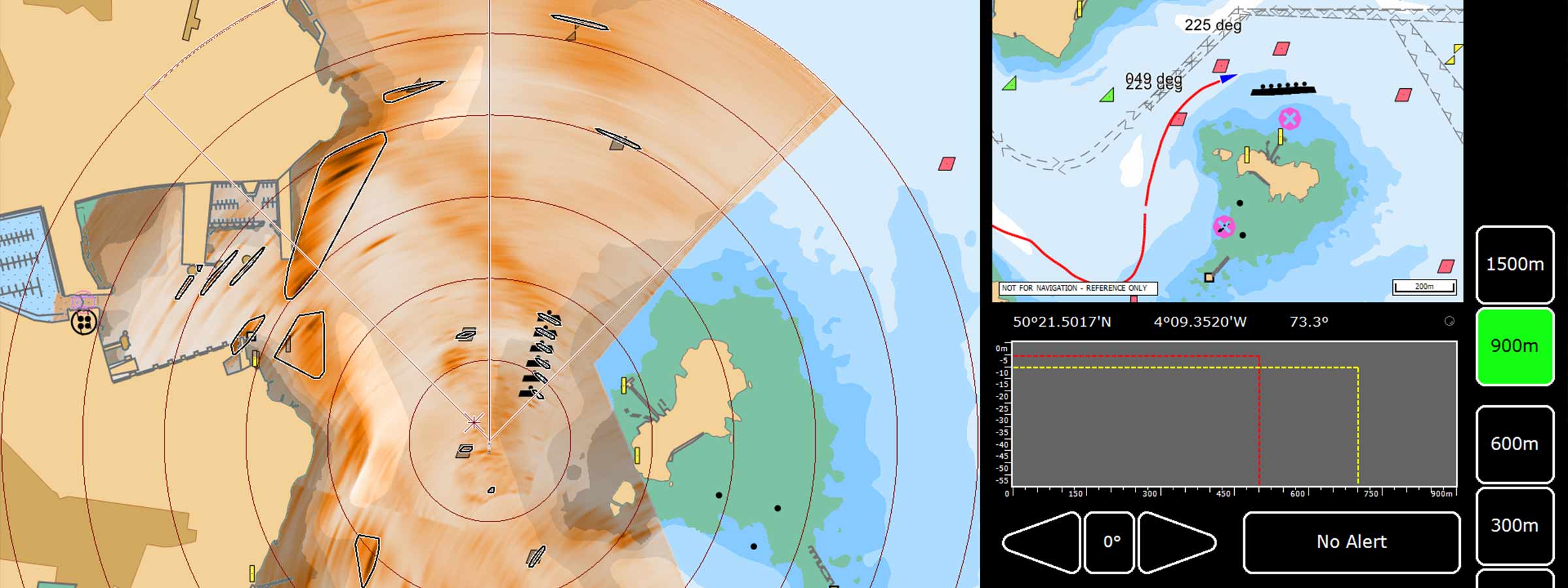Coronavirus might have put a major limit on many global travel plans over the last year, but it’s not abated a hunger for larger and expedition style superyachts, adventure and travel to more remote locations.
The desire for large and explorer class superyachts is a trend that has been growing for some time. Today there are well over 30 superyachts exceeding the 115m mark and more are in-build, some of which have been specifically designed for research and exploration.
The drivers are clear. There’s a new breed of adventurous superyacht owner that wants to go off the beaten track. They want vessels that can be self-sufficient for longer, providing the ultimate platform for exploration in remote areas. But being more adventurous means more risk. With the right technology, it’s risk that can be removed.
De-risking expeditions with forward looking sonar
Security and safety is an area in which UK-based marine security specialist MarineGuard Systems is increasingly involved. The company usually helps owners of superyachts, typically those in the 100 m and above range, to install and integrate complex security systems – creating a virtual bubble around a yacht, with outer and inner perimeters, that’s able to recognise and communicate changes in the security environment.
Sonardyne has a longstanding relationship with MarineGuard and for a number of years we’ve been working together to supply systems that look after the underwater part of that perimeter – introducing a whole new dimension to maritime security systems. That’s usually by deploying our Sentinel Intruder Detection Sonar (IDS). Sentinel alerts vessel managers or owners to any underwater threats, such as approaching divers or even autonomous underwater vehicles (AUVs).
Underwater CCTV for navigating unknown waters
But while Sentinel protects superyachts from intruders, what about protecting these prized assets from hidden threats while they’re cruising or navigating new or uncharted waters?
The growth in expedition style yachts and a hunger to explore off the beaten track has meant MarineGuard is increasingly being asked to install forward looking sonars (FLS) on to superyachts as an essential navigational aid. They’re a powerful tool that visualise the seabed beneath and ahead of the vessel in 3D, highlighting via live, clear 3D graphics the bathymetry, including uncharted reefs, wrecks, sand bars and more, so that ship captains have ample time to change course. They can also pick out objects in the water column, which may otherwise be unseen.
However, in the past, it’s been a challenge to install some FLS systems. MarineGuard has completed a number of FLS installations for superyachts around the world. But because of their size, the most capable systems have been limited to only the very largest superyachts.
Forewarned is forearmed with Vigilant FLS
Not any more. We recognised this challenge and the result is Vigilant, a new FLS. It’s an impressive tool. It builds crystal clear, easy to interpret live 3D imagery of the seabed, down to 100 m water depth and out to 600 m ahead, constantly. Vigilant’s graphics show the seabed in stunning clear detail ahead. It’s so clear you can pick out a narrow channel or an anchorage. You can also look at where you’ve been, to pick a return course.
Vigilant also automatically detects submerged objects ahead of your vessel, out to 1,500 m. We’ve had one user already tell us it’s picked up even a channel marker at 1,100m range. This is a significant safety feature when in busy waterways or even out in open waters. These are hard to match capabilities and they’re all available through a new, simple to use touchscreen GUI or third-party ECDIS systems.
But, crucially, it’s 90% lighter and much smaller than our previous generation FLS. We recognised that size was an issue, so we re-designed the sonar head so that is it now 31cm wide – that’s small enough for use on uncrewed surface vessels (USVs) and even the diver delivery units (DDUs) commonly used by Navy SEAL teams to covertly access hard to reach underwater areas. In fact, it’s being integrated into UK firm SubSea Craft’s VICTA DDU!
So how does it work?
The sonar works by transmitting acoustic energy into the water, through a 90-degree azimuth, and listening for the echoes, which it then uses to build up a picture of what’s in the water, all of which is underpinned by advanced signalling techniques and data processing. It’s a process that’s even more complex than multi-beam echo sounders, which use a fan of beams to map the water column and seabed topography, because instead of looking directly beneath the ship, the fundamental operational requirement of an FLS means delivering the same type of information many hundreds of metres ahead of the ship, often in shallow water. We need to ‘forward look’ and still provide navigationally relevant terrain and object detection data. That’s not easy.
Easier to install
MarineGuard is already supporting the installation of Vigilant systems and say it’s already noticeable how much easier it is to install, thanks to the reduced size and weight. It means that it’s not just the largest superyachts that can now benefit from the most capable FLS systems in the market. Smaller vessels can now also benefit from knowing exactly what lies beneath the waterline, below and ahead, as they set a course for their next adventure into new and even uncharted territories.
In today’s travel restricted world, that even helps to ease logistics prior to mobilising for that next expedition trip off the beaten track.
